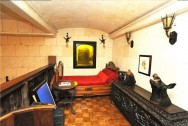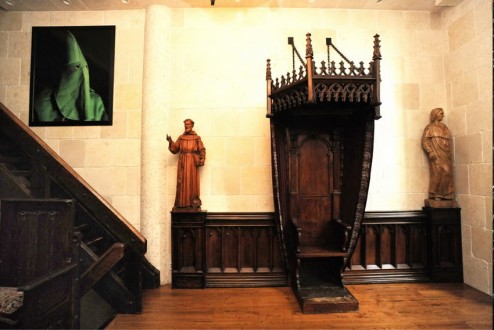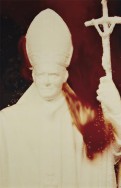
Serrano is from a half Honduran, half Afro-Cuban background, and was raised a strict Roman Catholic. He studied from 1967 to 1969 at the Brooklyn Museum and Art School. He worked as an assistant art director at an advertising firm, before creating his first works in 1983 at age 28. Serrano is represented in New York, where he lives and works, and Paris, by Yvon Lambert Gallery.
 Serrano’s work as a photographer tends toward relatively large prints of about 20 by 30 inches (51 by 76 cm), which are produced by conventional photographic techniques (as opposed to digital manipulation). He has shot a vast array of subject matter including portraits of Klansmen, morgue photos, and pictures of burn victims. He went into the New York subways with lights and photographic background paper to portray the bedraggled homeless as art objects…Within this series are a number of works in which objects are submerged in bodily fluids. Most famous of these is “Piss Christ” (1987), a photograph of a plastic crucifix submerged in a glass of the artist’s own urine. This caused great controversy when first exhibited.
Serrano’s work as a photographer tends toward relatively large prints of about 20 by 30 inches (51 by 76 cm), which are produced by conventional photographic techniques (as opposed to digital manipulation). He has shot a vast array of subject matter including portraits of Klansmen, morgue photos, and pictures of burn victims. He went into the New York subways with lights and photographic background paper to portray the bedraggled homeless as art objects…Within this series are a number of works in which objects are submerged in bodily fluids. Most famous of these is “Piss Christ” (1987), a photograph of a plastic crucifix submerged in a glass of the artist’s own urine. This caused great controversy when first exhibited. 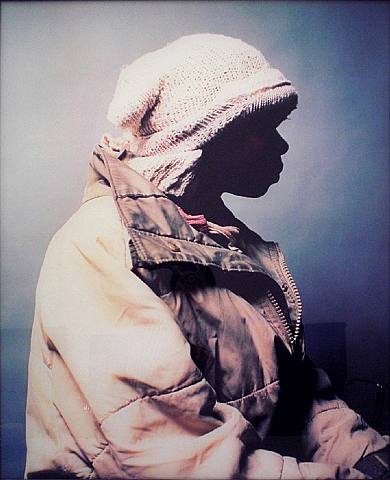 The work was sold for $162,000 in December 1999 in London, which was far beyond the estimated $20,000 – $30,000. Serrano’s series “Objects of Desire” from the early 1990s features close-ups of firearms, photographed at the Slidell, Louisiana home of artist Blake Nelson Boyd. The best known is the shot, against a glowing orange background, down the barrel of a loaded .45 revolver (belonging to Boyd’s grandfather) and was used by Jonas Mekas for the cover of the April-May-June 2007 Anthology Film Archives catalog. via en.wikipedia.org/wiki/Andres_Serrano
The work was sold for $162,000 in December 1999 in London, which was far beyond the estimated $20,000 – $30,000. Serrano’s series “Objects of Desire” from the early 1990s features close-ups of firearms, photographed at the Slidell, Louisiana home of artist Blake Nelson Boyd. The best known is the shot, against a glowing orange background, down the barrel of a loaded .45 revolver (belonging to Boyd’s grandfather) and was used by Jonas Mekas for the cover of the April-May-June 2007 Anthology Film Archives catalog. via en.wikipedia.org/wiki/Andres_Serrano
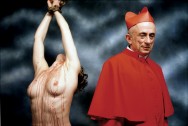
“In Heaven and Hell, Andres Serrano challenges
the benevolence of the Catholic Church while also
taking on the sexualization of violence against
women. The work was made in collaboration with
political artist Leon Golub, who appears in the
photograph wearing the red robes of a Cardinal,
subtly smiling as he looks away from the blood-
splattered nude who is bound and suspended next
to him.
Serrano said of the work, “I’m referring to the
relationship the Church has with women, whether they are aware of women as human beings or just take
them for granted and dismiss them.” – Sotheby’s Contemporary Art Auction Catalog – March 9th, 2011
The only son of an Honduran immigrant father and a mother of Afro-Cuban origin, Andres Serrano was born in New York and spent most of his childhood in Williamsburg, Brooklyn, New York City. Like his family, his predominantly Italian-American neighbors were devoutly Catholic, and religion played a significant part in his growing up – in school, at home and on the streets. When Serrano was still a young boy, his father left the family to return to Honduras. Raised by a mother who spoke little English, and who was often hospitalized by frequent bouts of psychosis, he was forced to fend for himself from an early age.
After an initial school trip to the Metropolitan Museum of Art, young Serrano began to return to the museum on his own and became enamored with Renaissance painting, in particular its religious iconography. At the age of 15, he dropped out of high school with the ambition of becoming an artist and from 1967-1969 he attended the Brooklyn Museum of Art School. Unfortunately his art practice was delayed for several years after he became caught up with drugs and the harsh street life of New York’s urban poor.
At the age of 28, Serrano gave up drugs and began working in various straight jobs. These included a stint as an assistant art director at an advertising firm, and while he enjoyed the work, he still wished to pursue an art career full-time. Attracted to painting and sculpture yet insecure about his technical abilities, he focused on photography, with which he had become familiar in his position as art director. From the beginning Serrano thought of himself as an artist using photography, and not as a photographer per se, the distinction being that he was not interested in documenting ‘reality’, but in creating his own.
Influenced by the pre-war European art movements of Surrealism and Dada, the first images Serrano created (back in 1983) were tableaux incorporating religious iconography, dead animals, raw meat and human subjects, amongst other elements. More than any other, blood was the constant element tying these images together. A symbol for passion and violence, it became the ideal vehicle to convey Serrano’s preoccupation with the sacrificial dramas of spiritual, political and sexual practices, and the ecstatic links between them. References to great artists from Rembrandt to Mondrian, and to various cultural forms of memento mori, were also persistent themes that would recur throughout Serrano’s oeuvre.
Subsequently, Serrano decided to use blood not just as content, but as form, resulting in images that were more reductive and abstract than his earlier works. Along with blood, the artist began using urine, milk, and later semen, as the raw materials for his work, producing two overlapping series – ‘Body Fluids’ and ‘Immersions’ from 1985-90 – which were to prove far more provocative than he ever intended. In a 1989 congressional session, New York State Senator Alfonse D’Amato tore up a reproduction of one of the images from ‘Immersions’ – the now infamous photograph of a crucifix submerged in urine, titled Piss Christ.
The action sparked a public debate over the National Endowment for the Arts’ funding of ‘obscene’ art, and for better or worse the ensuing notoriety catapulted Serrano to worldwide fame. In fact, Serrano conceived many of the images from both series as monochromatic studies in light and color value. For example, the first photograph in the series, Milk Blood, 1984, explicitly referenced the geometric abstraction of Dutch artist Piet Mondrian.
After the media furore over Piss Christ, Serrano turned to the genre of portraiture, creating several thematic bodies of work, each depicting various social groups. The first of these was ‘Nomads’, 1990, a series of pictures of homeless individuals whom Serrano found on the streets and, in several cases, photographed inside his studio. The sense of dignity captured in these portraits together with their obvious orchestration came to signify a style Serrano would refine in later works such as his ‘Budapest Series’, 1992, and the opulent images of ‘A History of Sex’, 1997.
In other works, portraits of Ku Klux Klan members photographed in their own milieu (‘Klan Series’, 1990) and dead bodies mutilated or in the process of decay (‘Morgue’, 1992) confront viewers with more discomforting images of violence and death. Still, even these retain a certain seductive quality. Drawing from the lexicon of advertising, fashion and even pornography, Serrano’s large-format, highly saturated photographs aestheticize their subject matter, even when this is abject in nature. Like the images produced by his peers Cindy Sherman and Robert Mapplethorpe, Serrano’s works often take on an iconic status, and are some of the most arresting images in contemporary photography.
Artist’s Statement:
In the fall of 1997 I was approached by Laurie Fierstein, a bodybuilder and writer, about an exhibition of women bodybuilders she was co-curating for The New Museum of Contemporary Art in New York City. I said I was interested in participating and Laurie provided me with my first models, Tazzie Colomb and Yolanda Hughes. After that, I continued photographing several more bodybuilders, including seven women who competed in ‘The 10th Annual Arnold Schwarzenegger Classic’. My interest in these women is one of curiosity and amazement. I pay tribute to them, much like the Greeks who admired the male physique in search of an aesthetic ideal.
I am also fascinated by the notions of ‘masculinity and femininity’ and ‘power and sex’ these women embody and dispel. To some, these pictures are intriguing, to others threatening. Ultimately, they reveal as much about our attitudes to sex and gender as they do about the women themselves. (via: rogallery)
Andres Serrano interview by ilka Scobie
Self proclaimed “outsider†artist Andres Serrano has been a glamorous presence in the New York art world for over twenty years. In the midst of a bustling downtown block, he lives in a self-designed ecclesial space. Immense ceilings and Jerusalem stone walls create a dramatic serenity. The sole window looks out on a burst of urban greenery, as light floods the burnished wooden walls and Church furniture. His only bow to modernity is the 60 inch plasma TV downstairs. One of his large portraits of the Imperial Klan wizard, garbed in green, instead of the usual white hooded costume hangs on a wall. It’s the only 21st century artwork, except for a Jeff Koons piece and a Jenny Holzer work that remain stashed in a 17th century cupboard.
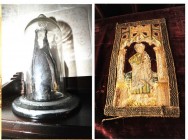 Perhaps best known for the controversy surrounding his infamous 1986 “Piss Christâ€, Serrano became instantly famous as an unwilling soldier in the conservative cultural war of the late eighties. Senators denounced him, death threats were made, and for six months, he remembers not allowing his photo to be taken. Serrano recalls a Venetian monsignor telling La Stampa newspaper, he was “a transgressive artist, not a blasphemous one.â€
Perhaps best known for the controversy surrounding his infamous 1986 “Piss Christâ€, Serrano became instantly famous as an unwilling soldier in the conservative cultural war of the late eighties. Senators denounced him, death threats were made, and for six months, he remembers not allowing his photo to be taken. Serrano recalls a Venetian monsignor telling La Stampa newspaper, he was “a transgressive artist, not a blasphemous one.â€
The half Honduran, half Afro Cuban New Yorker has exhibited widely and internationally, creating a magnificent body of work that portrays sexuality, death, guns, homeless people, Klu Klux Klanners, and in his last critically acclaimed show, feces.
IS : Are most of these treasures from Europe?
AS: Yeah , they are either French , English, Italian , German, Spanish.
IS: And how long did it take you to amass this?
AS: I have been collecting for about fifteen years… most of the stuff here is probably about the last ten years.
IS: Do you travel frequently?
AS: I do, sometimes. And a few of my things I have gotten on my travels, but most things I bought either at auction.. at Sotheby’s or Christie’s or a couple of dealers. My focus is 17th century and earlier. A lot of my things are 17th, 16th and 15th. I even have a 13th century Madonna in my bedroom. She is very Romanesque.
IS: You have been called a conceptualist with a camera rather than a photographer. How do you see yourself?
AS: I like that, as an artist with a camera, rather than a photographer because I studied sculpture and painting at the Brooklyn Museum art school. I was there in 67/ 68. I studied with Calvin Douglas, he was a black teacher. It was a great place.
IS: Did you live in Brooklyn?
A: I was born in Manhattan but the family moved to Williamsburg when I was about 6 or 7, before it was gentrified. I think I was one of the first artists when I arrived in 1957 in Williamsburg. I grew up in Brooklyn until after art school when I was about 19 then I moved into Manhattan. I lived at 95 Havemeyer Street in a building that was owned by my grandmother. My mother and I rented from her and we lived on the 2nd floor. I once saw a receipt from that time and rent was $43 a month. Long gone.
I: Are you religious?
A: I am not a practicing Catholic, I am a Christian… I go to churches first of all in Europe and I go to churches first of all for aesthetic reasons rather than spiritual ones. They are the temples of beauty. I find churches in the US are not old enough for my tastes. So I prefer the churches of Europe.
I ask Andres about his Klan series.
A: There is a curiosity, I was scared, but mostly I was scared of coming back empty handed. First of all I asked the Klan that I met to pose for me, the ex imperial wizard at first refused to pose for me and only after his lawyer asked him several times, he finally relented and said ‘yes’. Ironically his lawyer was Jewish. The clan had a Jewish lawyer defending him in the Supreme Court and it was a case where they were trying to wear their masks in public and they lost their case.
IS: How were they as people?
AS: They would talk about niggers, jews and queers, but after they realized I wasn’t there to confront them, to judge or debate them, they would settle down and act normal. They realized I was Latino I am sure, they knew I was not white. They were very normal looking, in fact, James …. the ex-imperial wizard was an old man and he looked very normal. But I found, no matter how nice they were to me, as soon as they put on their robes and masks, they assumed a different aura and it was very unsettling. I knew the men behind the masks, and yet once they had their masks on, they had another persona.
IS: The one thing I always really admired is that in going to one of your shows you really have a very in-depth and profound experience. What is the next thing you are working on?
A: It’s a new project. Unbeknownst, music is my first love. I always wanted to be a singer, a musician. I didn’t have the courage. So I have been in the recording studio. What I’m working on is rock, soul, rhythm and blues, maybe a little punky. The record’s called “Vengeance is Mine.†I chose to do some songs I have always loved.While we were in the studio, I was asked, do you have any lyrics? and I said no.. but my girlfriend Irina Movmviga she said, wait a minute, I have to go home. I’ll be back. And she came back 2 hours later with lyrics and I didn’t even know she wrote songs. On the spot we created a melody and we recorded the song. The next day she wrote 2 other songs which were recorded too.. so there were three originals there, written by Irina on the spot.
I really want to find a record label rather than market it myself. I developed a character, a persona, for this album as a recording artist. I won’t be recording as Andres Serrano but as Brutus Faust.
IS: What will the costume be?
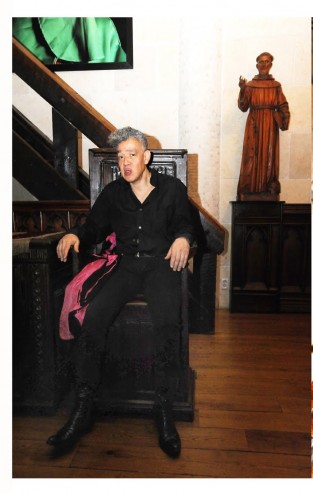
AS: It is very simple…. you’ll have to see. Hopefully, if I get a label interested, I’ll let you know and I’ll send you a copy. I don’t really want to perform at this point, I just want to record. If at some point in the future, I have to perform I’ll get ready for that, but right now I just want to record the music and get ready for that. As a kid that music stuff was a dream but I never really tried it. I didn’t sing as a child and I was afraid to, but I feel I know music even better than art. It is funny, art doesn’t move me emotionally, even as a visual artist, I am not moved by my work, even though I enjoy doing it.
Music moves me and film moves me. More than anything, music moves me. It gives you emotion, a lot of emotion. I feel the art world is very small compared to the people that buy music, who listen to music, to people who go see a movie, to sports, even people who go to wrestling matches. Art has a relatively small space in most people lives.
IS: Is there any artistic group you feel a part of? Mapplethorpe?
AS: All of my life I had a sense of passing through. I always had the sense that I am here now, for the time, but I am not really one of you. And that goes way back to the days of art school, when I became a drug addict, and for about eight years I did a lot of heavy drugs in the lower east side. And even then I felt, yes, I am a part of this but I am not really one of you.
And that feeling has even persisted in my years as an artist. So I always got the sense of passing through. And that allows me to do as many things as I have done in my life, meaning that I am not attached to any one thing.
IS: What’s the next thing besides the music that you are interested in, like after doing the whole Shit show?
AS: For me shit was sort of like an end game, meaning that if I don’t do anything from here, I am okay with that. I don’t produce a show unless there is a reason for it, unless I have been asked by a gallery to do a show, unless there is a venue.
Right now, there are no plans for me to do anything. The ideas are sort of on the back burner. I felt that “shit” was sort of a conclusion to a phase of my life and if I wouldn’t do any more as an artist, I wouldn’t miss it.
I feel that Marcel Duchamp had a similar attitude when he stopped doing any art work in the last 25 years of his life and just played chess. He knew that he had nothing more to say and rather than repeating himself ad nauseum he decided to leave it alone.
IS: I hope you don’t. And all your admirers certainly hope you don’t.
AS: If I am invited to do something, maybe I will.
IS: How long did it take to shoot the shit show?
AS: The shit show took me 2 months and most of the shit work was taken in Ecuador in about a two week period.
One of them was my shit, one of them was Luther, my dog’s shit, but all the other shits were animal shits. Actually, there were two other human shits, ‘Freudian Shit’; which came from my therapist and “Holy Shit” which came from a priest.
IS: You did it in a studio in Ecuador? The light was so amazing.
AS: Most of it was done in a zoo in Ecuador, we just found a room and made it into a studio.
LC: Did you ever do work with sperm?
AS: I did ejaculations in 1989.
IS: Were you influenced by Piero Manzoni who put his shit in a can?
AS: Not at all, because Manzoni put shit in a can. No one has ever taken pictures close up of shit and called it “shit”. I feel it is two birds of a different color.
I: Where do you usually work?
AS: I work here. The assistant puts up the equipment, I shoot the picture and then we put it away. I use a Mamiya rb 67. I don’t use digital. I like film, I use ciba chrome, I print from scans, the originals are transparencies. 6×7 film. I use a tripod. I studied painting and sculpture, not photography. After two years of painting I felt I couldn’t paint really and so after I left art school I lived with a woman called Milly Erwick and she owned a Konica camera. So I started using her camera, but always thinking of myself as an artist using a camera, rather than a photographer.
I would like to write my memoirs one day, but again, I need a reason to write for example if a publisher came to me, I would write. I don’t like to waste my time and I like to do my projects when I know where they are going. I work better with a deadline as well.
I was 40 when success really started to happen. I am 59. I was already an older artist, I was surprised since I never thought I would make money from my work. I always wanted to show it and I always thought success would come for me after my death. So I was happily surprised that I’d come to a point where I could make a living off my work.
I: Do you envision staying in New York?
A: I am a hardcore New Yorker, I have been here all of my life. I have lived for four months in Budapest, three months in Rome but I never gave up my apartment in New York. It’s home. I remember a few days after Sept. 11 a lot of people were leaving the city and I asked a friend of mine from the Bronx, “Where are you gonna go?†and he said: “Where am I gonna go, I will stay here and defend the cityâ€. And that was the attitude: we are going to stay here to the end.
I: And how do you think your art will be remembered?
A: My artistic legacy is a lot of passion. My legacy as an artist is that I made an impression and that’s the best thing anyone could do.




